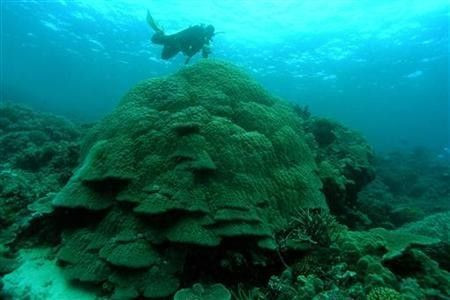Scent of the Triton Terrifies Starfish Predators

Scientists at the at the University of Sunshine Coast and the Australian Institute of Marine Science (AIMS) have discovered a natural resource that could be used to control pests in the Great Barrier Reef. Giant sea snails emit a scent that frightens the crown-of-thorns starfish, the reef's chief predator. Dr. Scott Cummins, a USC researcher and expert on aquatic animal chemical communication, said that these findings could be a breakthrough in pest management.
The giant or trumpet triton is one of the world's largest sea snails and is valued for its beautiful shell. It feeds on other molluscs and starfish, including the crown-of-thorns starfish. However, the snail is rare on the Great Barrier Reef.
"Giant tritons only eat about one crown-of-thorns starfish per week, so breeding enough of them to control big populations is not really feasible," said Dr. Cummins. "But we now know the giant tritons release this scent that makes the starfish scurry away.
The research team includes highly-skilled molecular biologists and experts in proteomics and metabolomics who can identify what the scent molecule is. The team plans to synthesize the scent molecule to create a compound that could be dispensed in different parts of the coral reef. The method could keep the crown-of-thorns starfish away from the reef and drive them to areas where they can be exterminated by traditional means.
Major starfish outbreaks can destroy coral reefs. Since the 1960's, there have been four large outbreaks in the Great Barrier Reef, and the recent one started in 2010. Crown-of-thorns starfish predation on coral polyps accounts for 50 percent of the cover loss on the reef in the past 30 years, according to the AIMS. Thus, to allow coral growth and recovery, the starfish population should be lowered. Management intervention for the past decades involved culling the starfish with lethal injection and surveillance of their whereabouts in the reefs.
Current initiatives by different institutes and organizations aim to preserve the existing coral cover and to prevent more outbreaks. Principal Research Scientist at AIMS, Dr Mike Hall says, "The objective of our project is to develop novel control techniques by identifying their natural vulnerabilities."





















